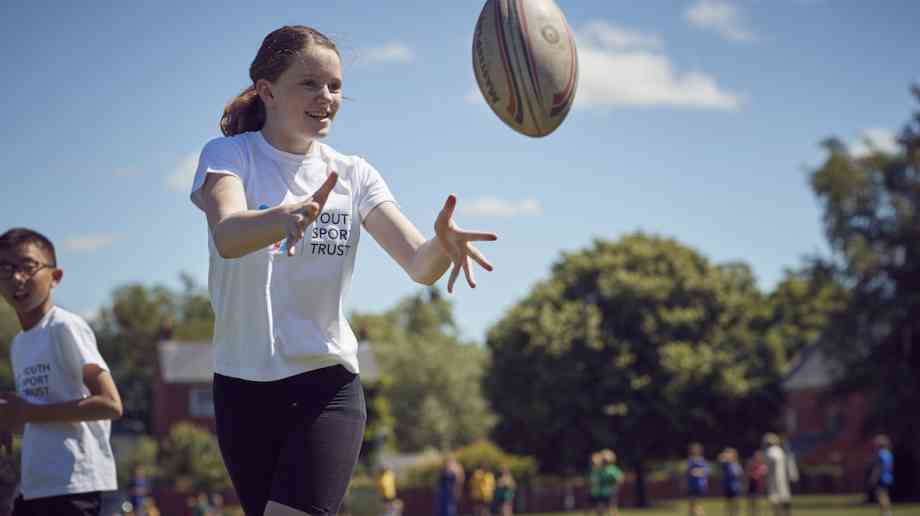
How to ensure an active school day
Alarming findings from the Youth Sport Trust (YST) suggest that 38 per cent of English secondary schools have cut timetabled Physical Education for 14-16 year-olds since 2012, while almost one in four (24 per cent) have done so in the last academic year.
It comes at a time when too many young people are inactive, obesity rates are going up, mental health issues are increasing, and there is a need for growing resilience and other employability skills among this generation.
We work with thousands of schools across the country and believe that unless we reverse the slide and refresh Physical Education, we risk failing a generation who will be denied the benefits of a revitalised PE offer.
Diminishing opportunities
It is worrying that opportunities for young people to be active during the school day are diminishing year-on-year. Like English and Maths, the YST believes Physical Education should be part of the bedrock of a good education equipping young people with the vital skills which support their wellbeing, aid learning in other subjects and help prepare them for employment.
A high-quality PE curriculum uses sport as a vehicle through which a joy of movement is established, life skills are developed and an understanding of a healthy lifestyle is acquired.
Cuts to PE time are depriving young people of these benefits. We will be selling this and future generations short if PE is not made fit for the 21st century and put at the heart of a broad and balanced curriculum in our schools.
YST research is based on responses from teachers at 487 English secondary schools. It found that timetabled PE time is decreasing, and the cuts get bigger as students get older. On average pupils moving from Key Stage 3 to Key Stage 4 experience a 21 per cent drop in the amount of curriculum PE they receive a week. By the time they are aged 16 to 18-years-old they are doing just 34 minutes a week at school.
Exam pressure, additional curriculum time for other subjects and staffing cuts are among the reasons cited for reductions. 38 per cent of teachers said their PE provision has declined because core/eBacc subjects have been given additional time with students taken out of timetabled Physical Education for extra tuition in other subjects.
PE teachers overwhelmingly feel the subject needs to be more valued amongst school leaders, parents, wider stakeholders and importantly young people. 97 per cent of teachers agree PE should be valued more within the school curriculum for what it offers young people.
We are calling for an overhaul of the focus of Physical Education and its place in the curriculum placing much greater emphasis on using sport and physical activity as vehicles through which we can enhance young people's confidence, emotional wellbeing, physical health and life skills. Examples of how this is being achieved can be seen in many areas of the country where the Youth Sport Trust My Personal Best programme is being implemented. This programme supports PE teachers to develop students life skills through PE. In Lancashire where the programme is being run in 40 schools, PE departments are now either leading the school health and wellbeing or working much more closely with health and wellbeing leads.
An active school day
Children need to be active, not just in physical education and sports, but during lunch hours, through after-school activities, and via active classroom environments. Only through this approach can young people achieve the Chief Medical Officer’s recommendation of 60 active minutes for all 5-16-year-olds. One of the ways schools can help to keep physical activity on the curriculum is by embedding physical activity across the school day.
Active 30:30
The Government Childhood Obesity Plan has set out the ambition for all children to achieve one hour of physical activity every day, with schools being responsible for delivering 30 of these active minutes. In response to this, the Youth Sport Trust has developed Active 30:30 to help schools reduce sedentary behaviour and increase physical activity in young people outside of timetabled curriculum PE.
Active 30:30 also helps schools address how to influence the other 30 active minutes to be achieved outside of school by engaging families, clubs and community groups.
We understand the pressures that secondary schools are facing to achieve in the core subjects and the E-bacc, and the effect this is having on the provision of high quality PE opportunities for young people. However, this is not a zero-sum game, by removing Physical Education from the curriculum schools are potentially impacting negatively on the benefits of physical activity and sport to learning in the classroom.
Youth Sport Trust research highlights the need for PE to be more widely valued and promoted in the curriculum by both senior leaders and the government to ensure young people, teachers and parents are fully aware of the wide-ranging benefits of an active healthy lifestyle on learning as well as wellbeing.
Learning from best practice
At Pleckgate High School in Blackburn, the school was facing high numbers of students attending with low prior attainment scores, and relatively high numbers of disadvantaged students. PE teacher and head of year Stuart Cadman identified there was a need to grasp the opportunity and develop a more focused approach to student wellbeing. He identified that PE provided a perfect opportunity to do this.
Stuart attended the My Personal Best training, facilitated by Youth Sport Trust, and utilised the resource cards to slowly and subtly build the principles and language into one of his year 7 PE classes. Resilience and wellbeing were a key focus to the lessons. Stuart then started to adapt the learnings from his lessons into the whole school, and it is now poised to play a central part school wide in the near future.
Time to talk
Engage with your senior leadership teams and staff across all departments to see how they could make lessons more active and ensure they understand the benefits this brings. We run a one-day course for primary school teachers that uses the context of PE and sport alongside practical learning approaches to support the teaching of English and Maths. Active Classrooms is based on research and trials in primary schools across the country. It uses existing resources alongside the National Curriculum Programmes of Study. It has been written by teachers for teachers, so it really gets to the heart of the challenges and offers evidence based solutions.
Time to take action
We are trying to reverse a deepening obesity crisis and decline in young people's mental health by doing all we can to support schools, and urge policy makers to harness the power of sport, PE and physical activity, use it strategically and to develop the traits and skills young people need to cope in today's world. For additional support, you can become a Youth Sport Trust member school; visit the website for more information.
Further Information:Latest News
19/12/2025 - 09:54
The Education Committee has expanded its ongoing inquiry into the early years sector to examine how safeguarding can be strengthened in early years settings.
18/12/2025 - 09:25
The UK will be rejoining the Erasmus programme in 2027, following a package of agreements with the EU.
17/12/2025 - 09:31
Ofqual has fined exam board Pearson more than £2 million in total for serious breaches in three separate cases between 2019 and 2023 which collectively affected tens of thousands of students.
16/12/2025 - 09:19
The average funding rates will increase by 4.3% for under 2s, and by almost 5% for 3-and-4-year-olds.
15/12/2025 - 10:30
Local colleges are set to receive £570 million in government funding to expand training facilities in areas such as construction and engineering.







